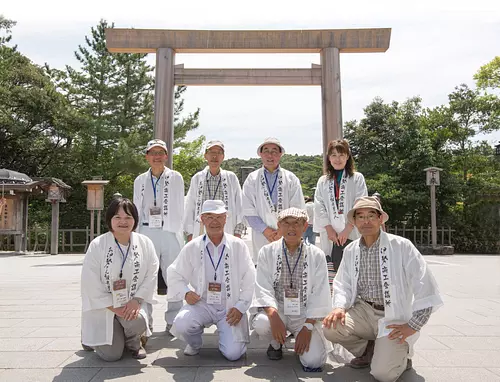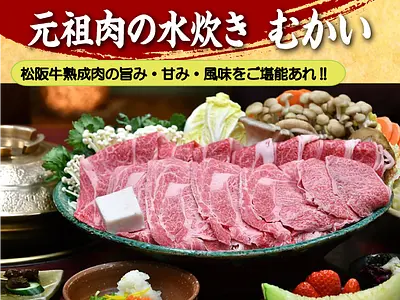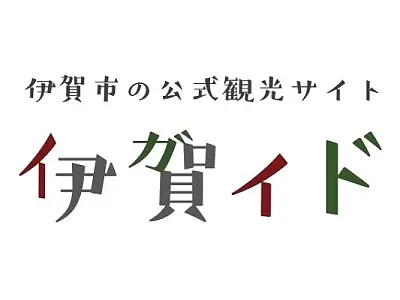Visit IseJingu early in the morning! Naiku filled with gentle light was a place where you could feel the solemn atmosphere...!
掲載日:2018.03.16
I participated in an early morning worship tour of IseJingu. Enjoy a 90-minute walk around Naiku with your "Ise-san tourist guide" and a satisfying breakfast of Ise-Udon! ...I'll teach you how to enjoy Oise-san even more!
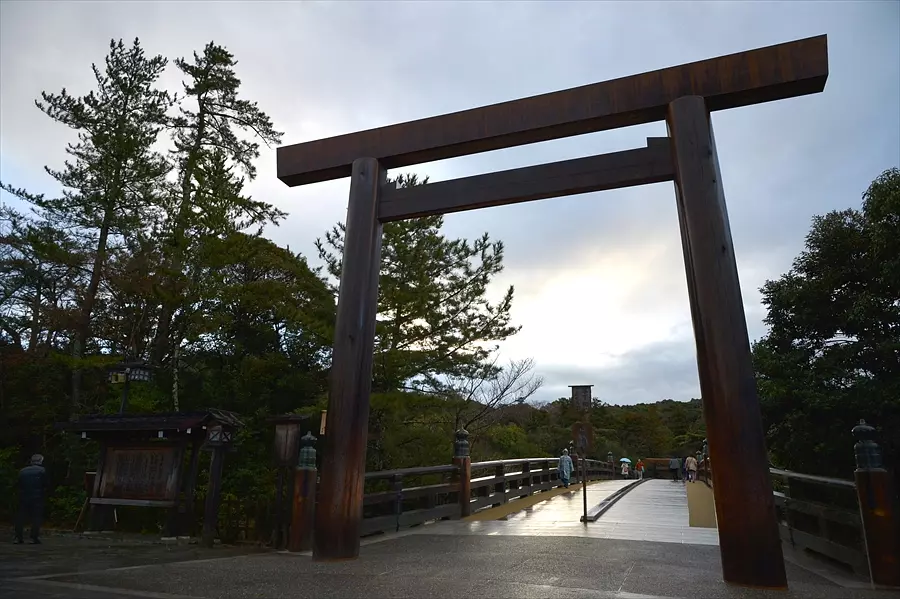
``If you want to visit IseJingu, the best time to visit is in the Danzen morning!'', he said, so I went there early in the morning.
I have visited Oise-san several times, but this is my first time visiting the shrine with the guidance of an ``Oise-san Tourist Guide''. We will meet in front of Naiku UjibashiBridge at 7:20.
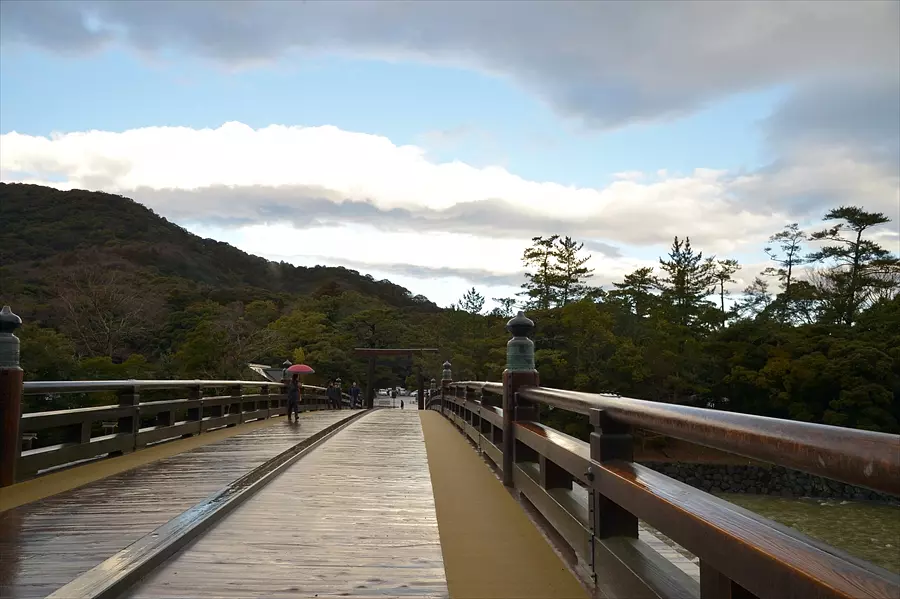
UjibashiBridge, which spans the Isuzu River at the entrance to Naiku, is a bridge that connects the everyday world to the sacred world. In fact, until just before this day, there was a possibility that the event would not be held due to heavy rain, but it turned out! The moment we arrived, the rain stopped and the morning sun was shining through the clouds, a miraculous event. A truly divine morning scenery...
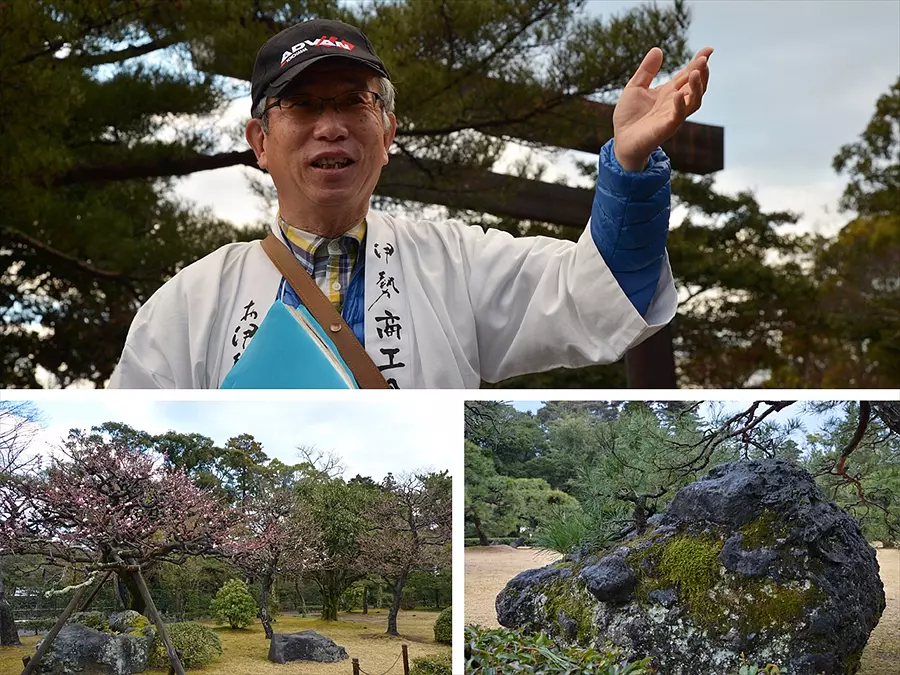
The approach continues straight.
…but!
Our guide, Mr. Sakuma, does not walk in a straight line. Cross UjibashiBridge, enter the Shinen Garden on the right, and enter the alley. This area is said to have once been home to the houses of people associated with the shrine, but since the mid-Meiji era, it has been reborn as a beautiful garden. Three types of beautiful plums, pebbles, and a pine tree that was hand-planted by Emperor Taisho when he was Crown Prince...we walk through each of them while listening to explanations about them. There's no signboard, so I would have missed it if I was alone. Having a guide is great!
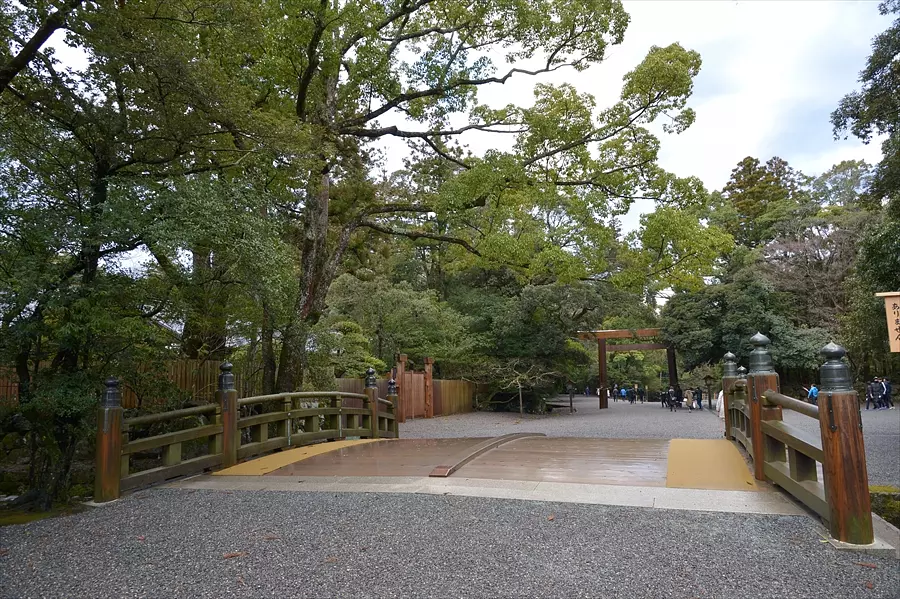
This bridge is called ``Hibyo Bridge''.
In the Edo period, private houses were lined up here, and the area beyond this bridge was a sacred area. Therefore, during this time, the river was passed through to prevent fires.
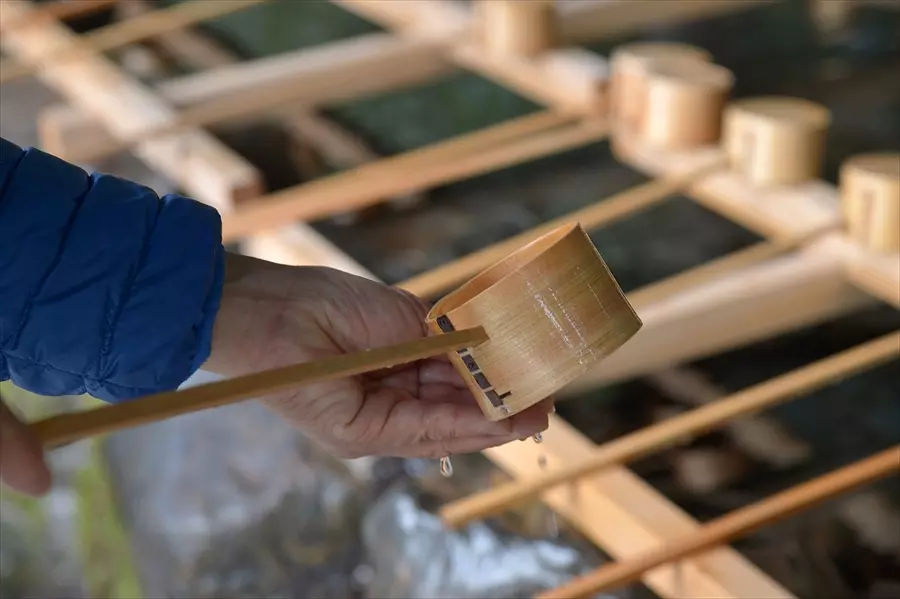
Before visiting the shrine, cleanse your hands and mouth at the chozuya to remove the impurities of the worldly world.
Do you know this correct etiquette?
Pour a ladle of water, cleanse your left hand, cleanse your right hand, take the water in your left hand, rinse your mouth, use the remaining water to cleanse your left hand again, and wash the handle of the ladle for the next person. Masu. This is a common etiquette at shrines across the country. It would be cool if you could do a series of movements without getting stuck.
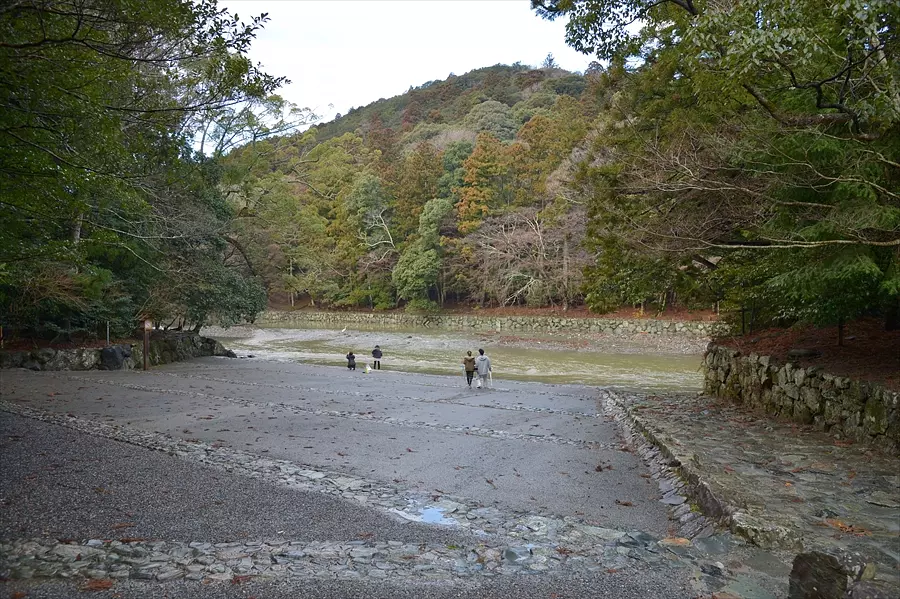
The water has risen due to heavy rain, but this is the Mitarashi basin of the Isuzu River.
It is a place where people used to purify themselves before worshiping in the old days. This stone pavement along the riverbank is said to have been donated by Keishoin, the mother of Tokugawa Shogun Tsunayoshi, in 1692.
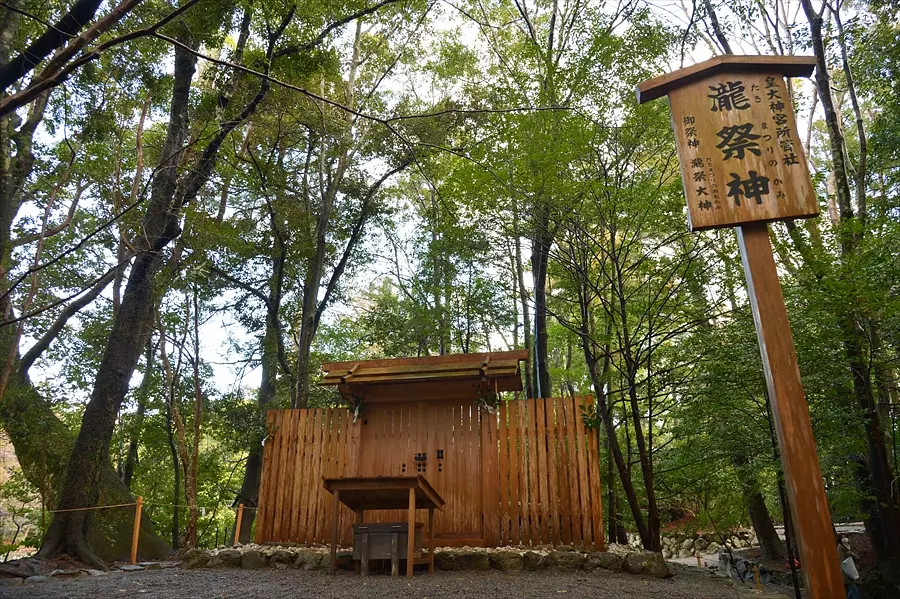
What was interesting in the guide's explanation was how to visit Taki Matsuri no Kami, which is dedicated to the guardian Takimatsuri-no-kami of the Isuzu River.
``This is not a place to make a wish.There seems to be a custom of greeting people by saying, ``I will be visiting the main shrine from now on.''''
Before heading to the main shrine, make an appointment! I did not know! (Actually, I didn't usually go.)
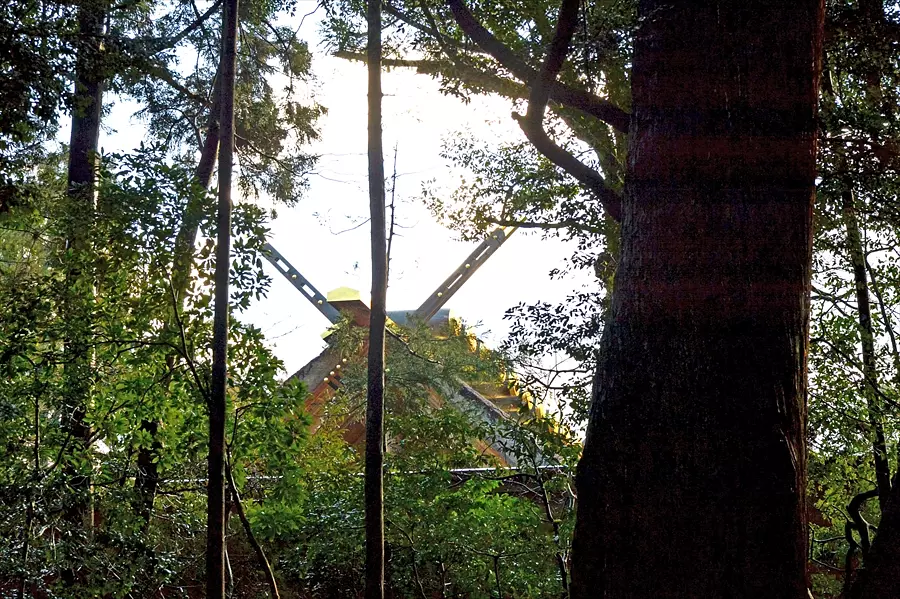
Since it is not possible to take photos at the main shrine, you can see the top of the thatched roof of the main shrine from the approach road...a quick glimpse of Katsuoki and Chigi. It sparkles in the sunlight and looks very beautiful.
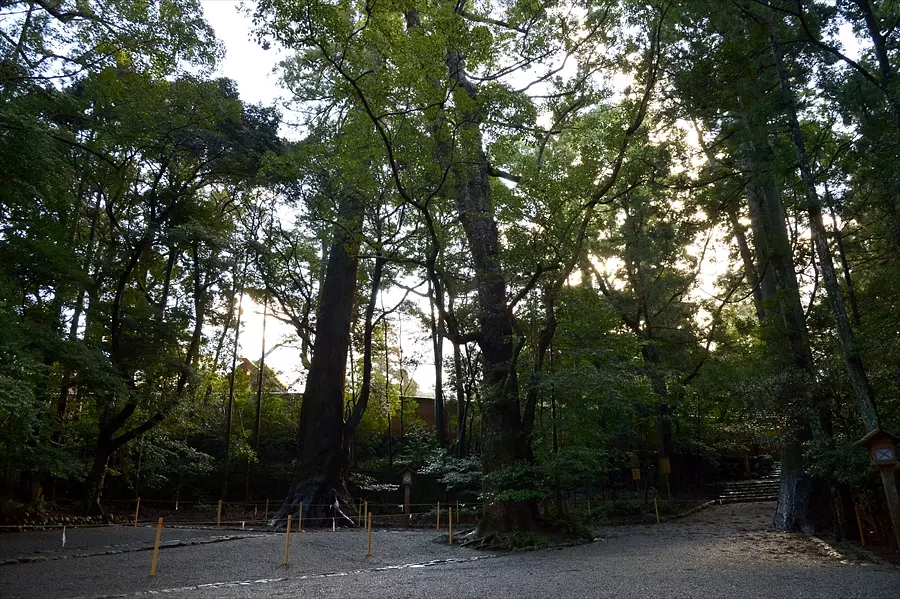
Even so, it is refreshing to visit the shrine early in the morning when there are fewer people!
The crisp morning air, the sparkling sunlight shining through the lush green forest of the shrine, the sound of the murmuring river...these are privileges only available to those who visit at this time of year. It felt like I was getting a little closer to God.
I can see why they insist that you should definitely visit the shrine early in the morning.
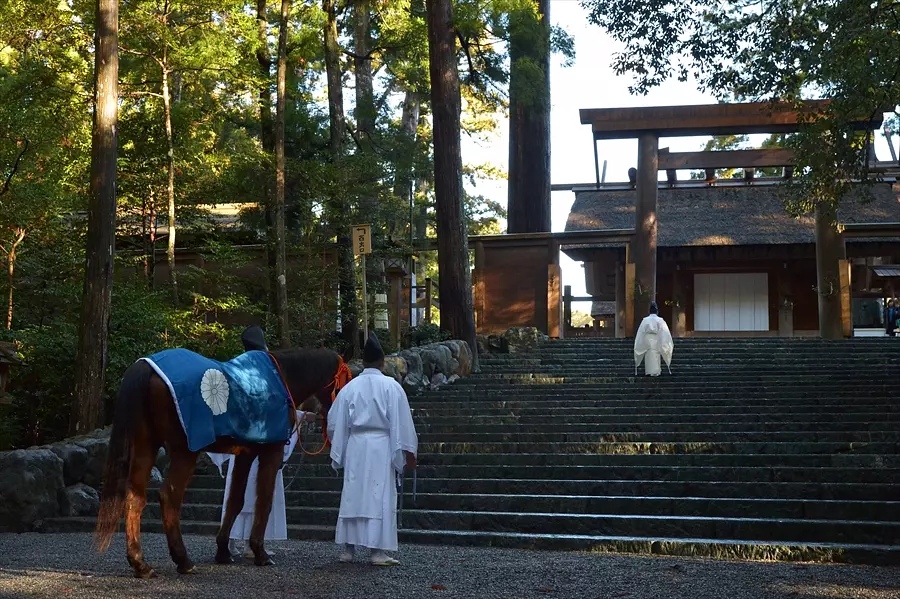
Every month, around 8 a.m. on the 1st, 11th, and 21st, a Shinto priest and a sacred horse (Shinme) come to worship, so we wait for the Shinme to appear under the stone steps of the main shrine.
The sacred horse also bowed to Amaterasu-Omikami along with the priest. Watching the ritual performed in silence, you can't help but feel the magnificent passage of time over the past 2,000 years.
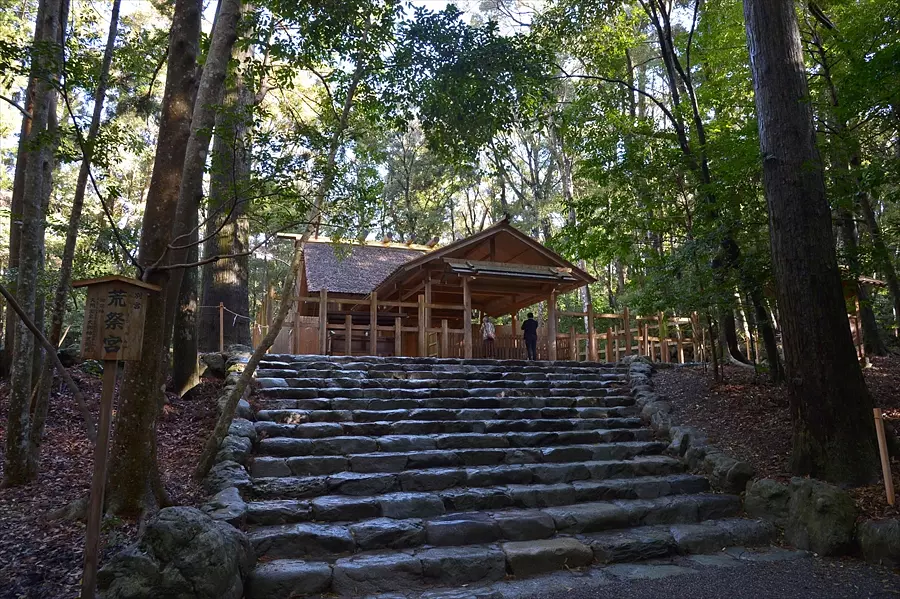
Next, we headed to Aramatsuri Betsugu Aramatsuri-no-miya that enshrines the Aramitama of Amaterasu-Omikami Omikami.
The guide said that you can first express your gratitude, and then if you have a personal wish, you can do so.
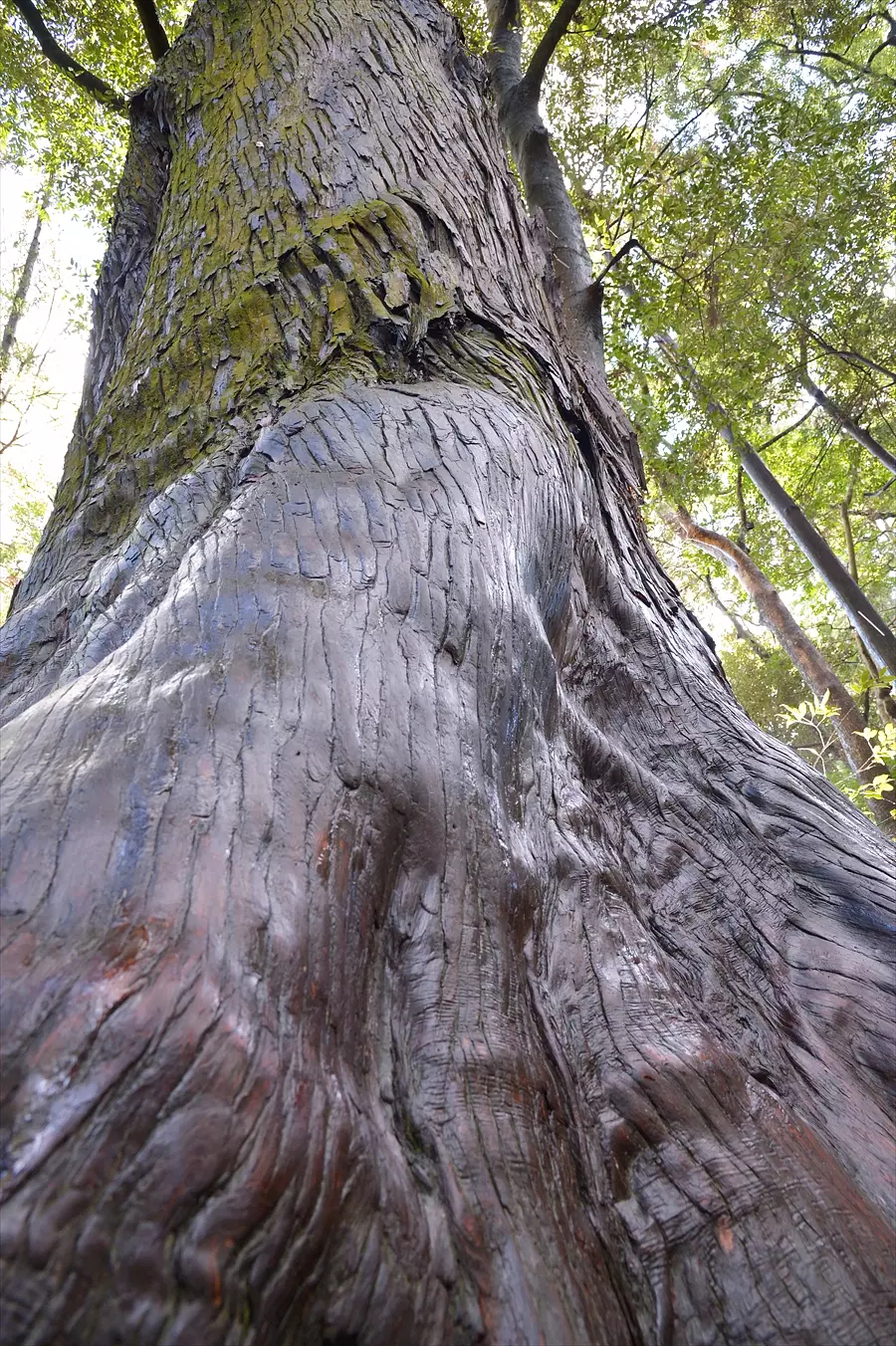
The Jingu cedar made me say, “This tree is magnificent!”
Ever since it was introduced as a sacred kounogi, people have touched the base of the tree to seek blessings, and the skin of the tree shines brightly. Everything in the sacred area of IseJingu can be said to be a sacred kounogi, so this tree is probably not the only one, but the way it grows upwards gives you a sense of its strong vitality.
(*Since this is a sacred area, please refrain from touching anything inside the shrine!)
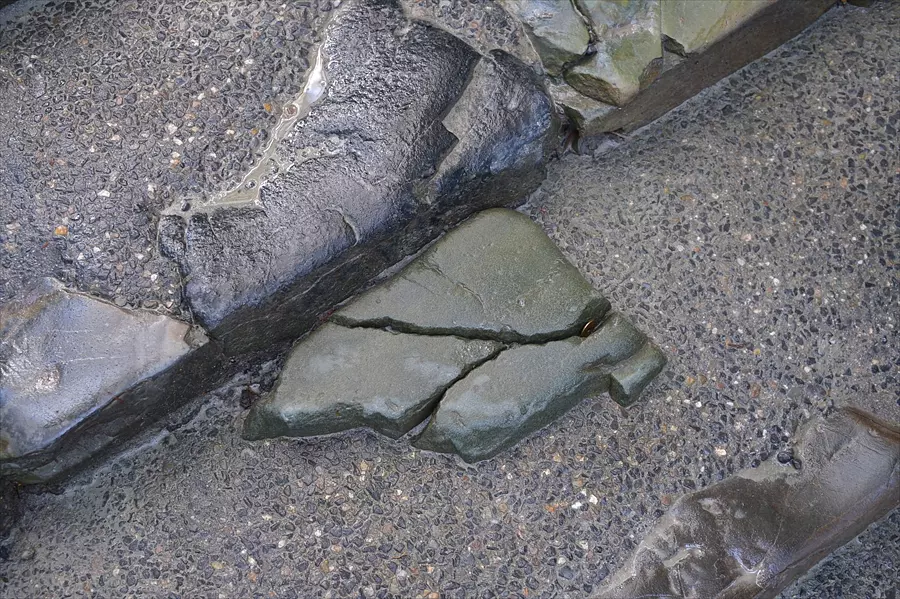
On the stone steps leading to Aramatsuri-no-miya, there is a stone called a ``unstepped stone''...If you look closely, you will notice that it is in a different place than the stone steps that are lined up in an orderly manner.
Legend has it that it fell from the sky because the crack looked like the character ``heaven.'' It seems that many people step on it without knowing it. I was very happy to have such a dedicated guide!
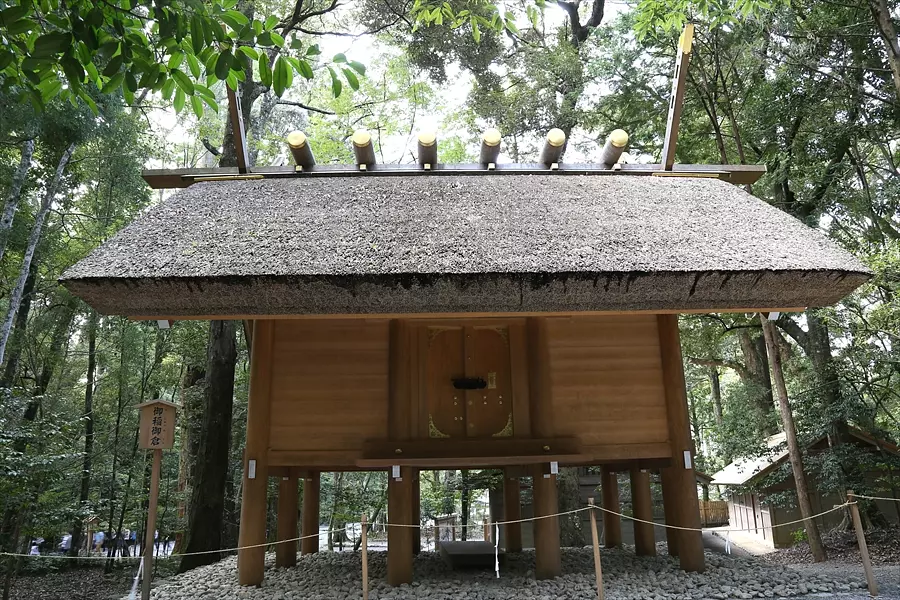
This is Mishine-no-mikura no Mikura.
Harvested harvested ears of rice are delivered from Jingu Kanda. Although you can't see the main shrine directly, you can feel the atmosphere of the main shrine because it is built in the Shinmei style (one-fifth the size).
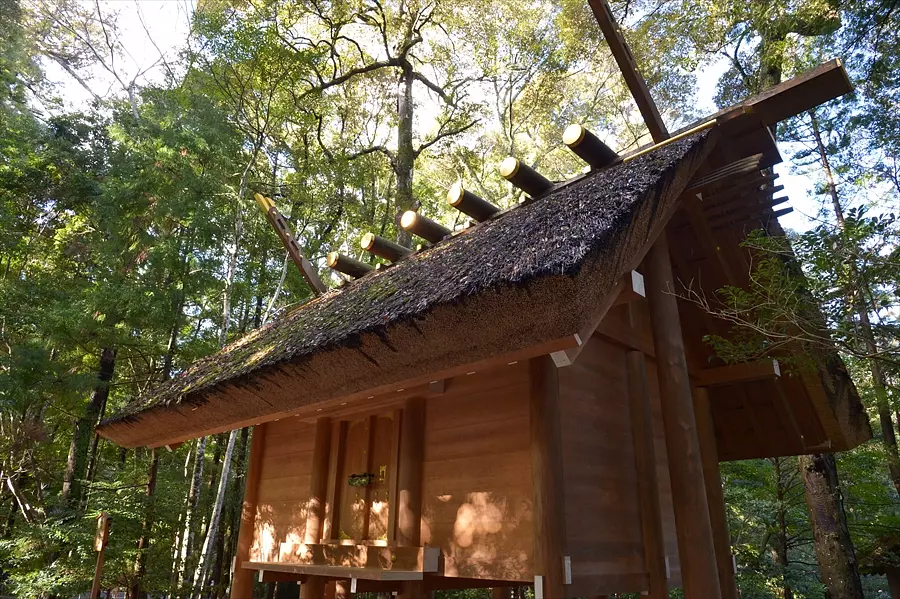
And next to it is Geheiden.
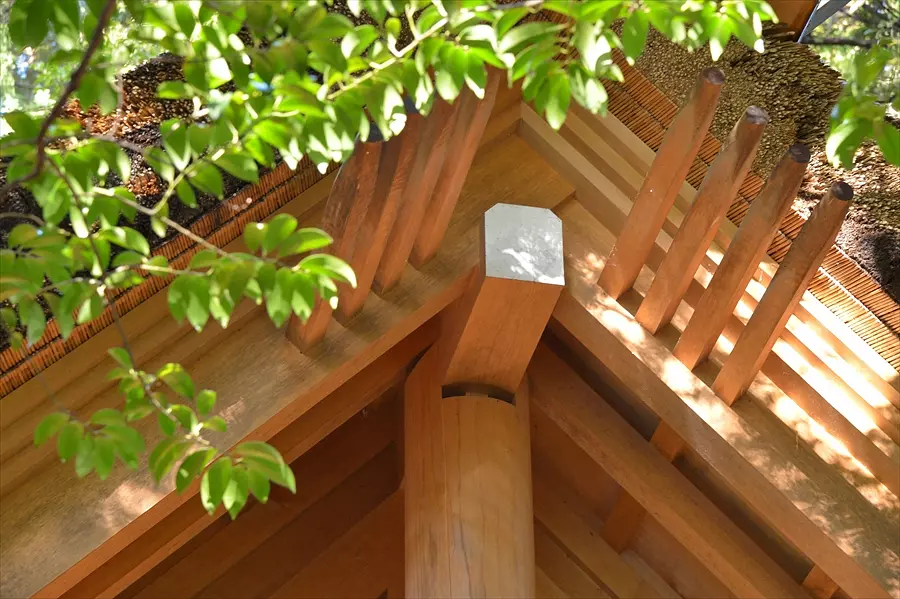
There is an empty space between the pillars. The guide said, ``There's a gap here.
By the time of the next ShikinenSengu, the gap will become narrower due to the weight. This is a space for play. That's the secret to longevity."
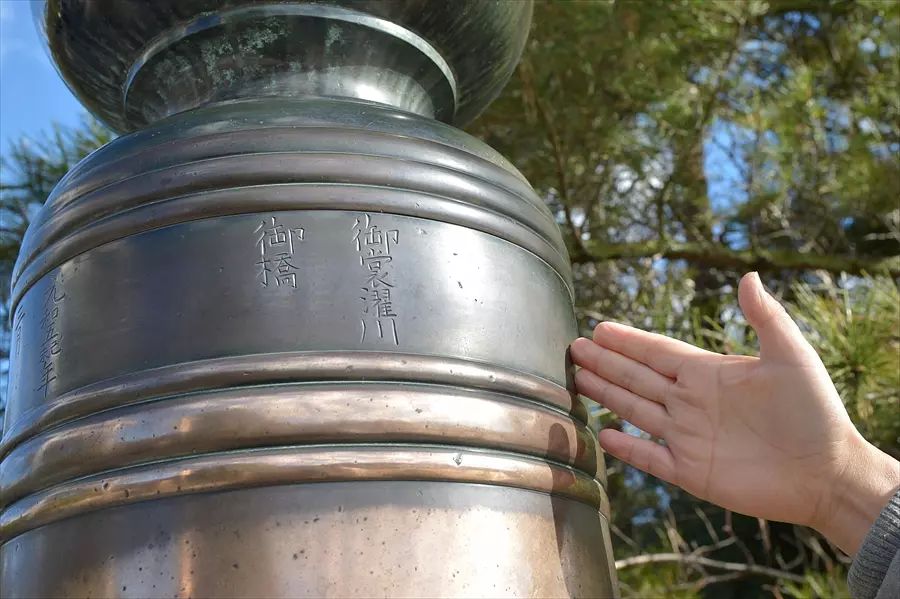
There is a place where many people have stroked the area just before crossing UjibashiBridge. ...That is the fake jewel of UjibashiBridge. If you look closely, you should be able to tell because only one of the fake jewels is shiny.
``That's because the Mandonusa of Aedohashihime Shrine, the guardian deity of UjibashiBridge, is enshrined inside the imitation jewel,'' the guide said. I felt very grateful, as if I had been blessed with divine protection until the very end.
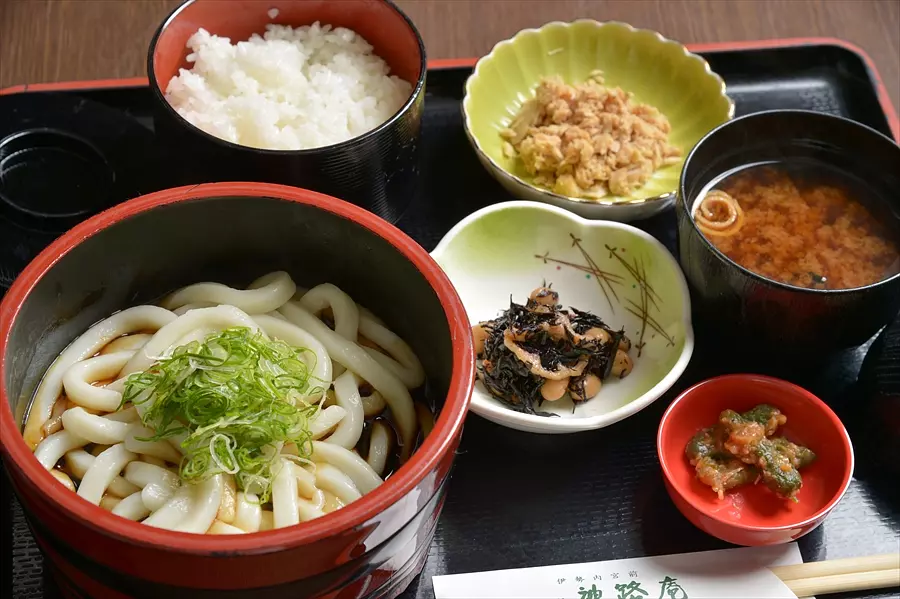
After visiting the shrine, Senokuniya.
At the end of the early morning worship tour, you can enjoy breakfast or 600 yen worth of shopping. I was hungry after all the walking, so of course I had breakfast! Yay, the famous Ise-Udon! ! When it came out, I thought, "Udon with rice!?", but Ise-Udon, which is served with a rich black sauce, goes surprisingly well with rice. It's even more delicious if you sprinkle plenty of chili pepper on it. It becomes a habit!
[Senokuniya]
Address: 117 Ujiimazaikecho, IseCity ujimazaikecho
Phone number 0596-23-5555
Official URL http://www.senokuniya.co.jp/
Business hours 8:30-16:30
Closed: Open all year round
Access: 1 minute walk from IseJingu UjibashiBridge
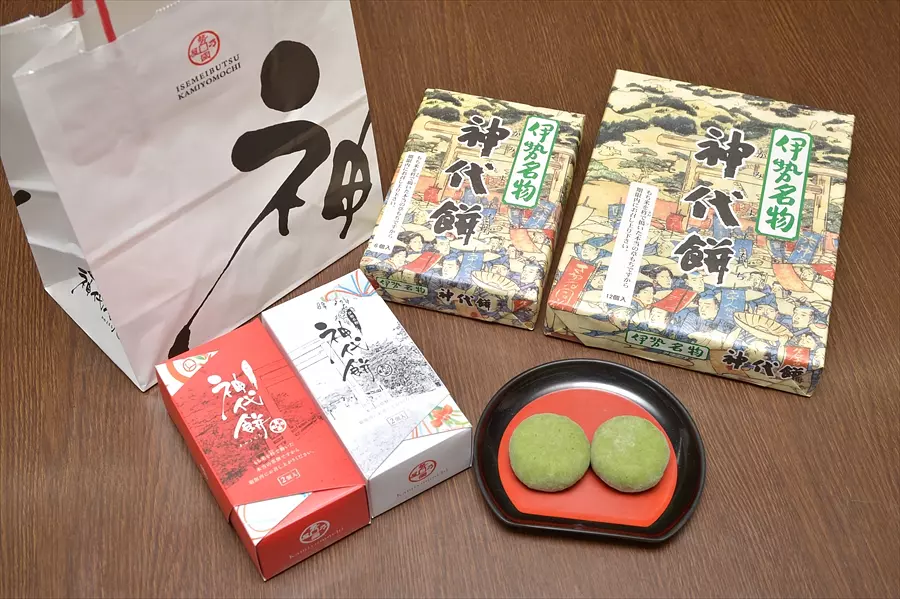
This is the famous souvenir "Kamiyo-Mochi".
It's additive-free kusa mochi, and it's a little small. It's not too sweet and you can eat as many as you like. This is said to be a sweet presented to the Crown Prince. I think it would be a great souvenir.
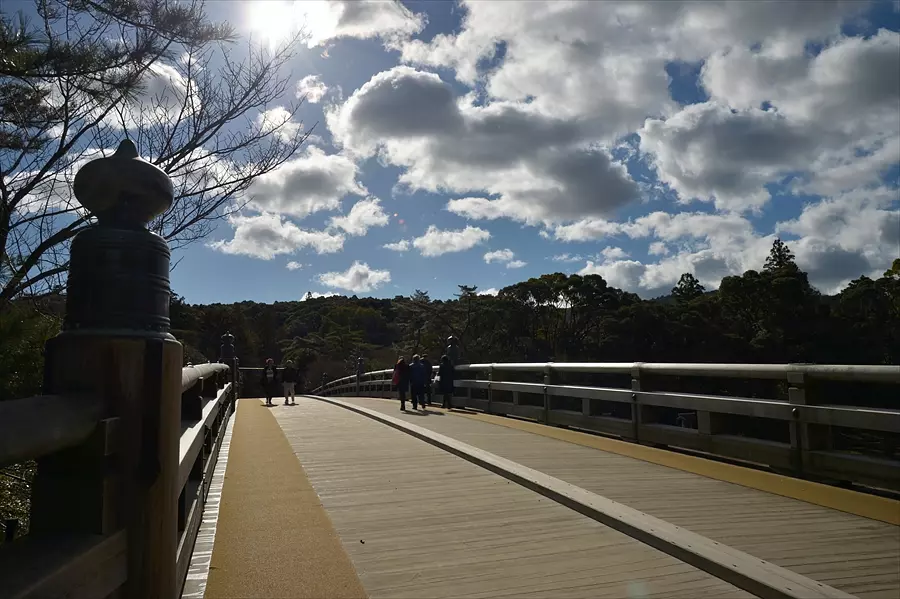
By the time we finished breakfast, the number of worshipers had gradually increased.
The sun is rising high, and the scenery looks completely different than before. Hmm, it's best to visit IseJingu early in the morning! The feeling of being closer to God when there are fewer people is a feeling that can only be experienced in the morning. Please come and experience it for yourself.
[IseJingu Naiku]
Address: 1 ujitachicho, IseCity Mie Prefecture
Phone number 0596-24-1111 (8:30-16:30)
Access: Approximately 6 minutes by bus from Kintetsu Isuzugawa Station
Official URL http://www.isejingu.or.jp/about/naiku/
【overview】
Period: All year round (excluding January 1st to January 3rd)
Time required: Approximately 90 minutes (excluding time for meals and shopping)
Price Adults: 2,300 yen Children (elementary school age and younger): 2,300 yen (free for preschoolers)
What's included in the price
・Guidance fee for accompanying Oise-san tourist guide (Naiku)
・Shingu wooden tag
・Breakfast (refreshing breakfast) or Senokuniya shopping coupon worth 600 yen (selection required)
Minimum number of participants: 2 people (minimum number of participants: 1 person)
(If there are less than 2 people, the tour will not be possible. In that case, we will contact you at least 3 days in advance.)
Itinerary In front of Naiku UjibashiBridge (departs at 7:20) = Mitaraiba = Takimatsuri-no-kami Matsuri Shrine = Kazahinomi-no-miya = Main Shrine = Aramatsuri-no-miya = UjibashiBridge = Senokuniya (arrives around 9:00)
*The order of information may change.
The meeting place
Naiku UjibashiBridge Torii-mae 7:20am (meet 10 minutes before reservation time)
For inquiries/applications: Bikuni Station (Business hours: 9:00-15:00)
117 Ujiimazaikecho, IseCity City, ujimazaikecho Prefecture 516-0024
TEL 0596-24-3501 / FAX 0596-24-3504
Official URL https://ise-guide.jp/
http://ise-machi.co.jp/dmo/
| Category | |
|---|---|
| season | |
| area |

